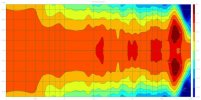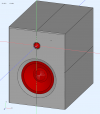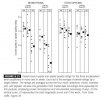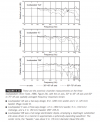Flat baffle speakers have waveguides. They have 180 degree waveguides with haphazardly designed terminations. Literally the only reason not to address treble dispersion is because it's difficult.Thanks for the link--to tell you the truth it paints far too rosy a picture with the simulations; the on axis msmt in particular is fantasy. Olson's paper from way back in the 50's say so, and if you have ever used either Tolven's or Bagby's simulators, its ugly and counterintuitive. I guess what I found was questionable was the implication that anything without a wave guide should automatically be relegated to second class status. There are a great many exceptionally fine loudspeakers that don't benefit from wave guides. I suppose as a hobbyist who build loudspeakers I took exception, because it seems to suggest why bother? It's only going to be second rate. But it's not the case. I know there are many theoretical reasons for believing the pathway to greater fidelity involves using as such, but in practice, things are squishier. If you look at the link below your original comment, the msmts and review of this speaker turn out very well indeed. So I guess just as are apt to dismiss miniscule differences in sould quality from different DAC's, lets try to avoid overstating differences in potential outcome based on a set of assumptions that don't always reflect the real world behavior of audio devices. I use brick wall filters (a no-no in controlled directivity land) and I have cut corners and failed to round or chamfer edges, or use 6.5" woofers to 3k (eek, you're blinding me with that laser beam)--and had superb results. Not sure if they could have been made better--at some point it is sufficiently good it doesn't matter.
Dogma can be a terrible thing in all its guises.
Oh and if one wants to play with diffraction--this is quick and dirty and doesn't require EXCEL: http://www.tolvan.com/index.php?page=/edge/edge.php
It doesn't mean diy isn't feasible, a 3 way can offer pretty smooth DI, but a slightly shaped tweeter faceplate at least is almost always a good thing. In a two way? Mandatory. Fortunately for us diy people there are some good options for waveguides, including some new high end offerings from SB.
More tongue point of the thread, the old Meyer sound monitors are ancient and should be judged as such. Interesting technology for the time. The new ones? Pricey but you're paying for a relatively sophisticated interface and bass management features so it is decidedly a pro product. However, the measurements do look good. I suspect they represent poor value for a typical enthusiast, especially compared to the JBL 708 and so on.





